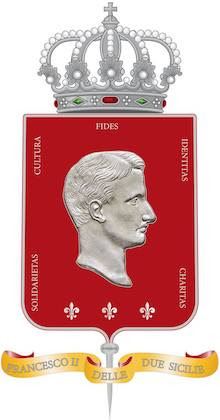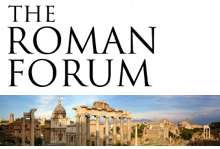 |
| Dante and Virgil (1861) by Gustave Doré, Le musée des Beaux-Arts |
 |
| Bust of Publius Vergillius Maro, C. 45 BC |
To the Neapolitans, he was not merely a poet but a protector. They whispered that he had sealed the city against plague, demons, and decay through his mastery of talismans and magic. In one tale, he encased the spirit of Naples in an enchanted egg, buried deep within Castel dell’Ovo—the Egg Castle—so that as long as the egg remained intact, the city would endure. Should it break, Naples itself would crumble into the sea.
Naples, that city of light and shadow, of superstition and sanctity, became the mirror of Virgil’s double nature. The ancients sensed in its volcanic soil a gate between worlds: the fuming breath of the Phlegraean Fields, the oracular caves of the Sibyl, the necropolis and serpentine catacombs beneath its streets. Here, in the uneasy marriage of Christian piety and pagan memory, Virgil found his second life—as Virgilius Solitarius, the solitary sage, the hermetic recluse who binds the spirits of fire and earth.
 |
| Virgil's Tomb in Naples (c.1818) by Franz Ludwig Catel, Metropolitan Museum of Art |
During the Middle Ages, this metamorphosis of the poet into a magician was no accident. In the ages when the sacred and the profane still intertwined, poetry itself was a magical act—the shaping of word into world. Virgil’s verses, pregnant with prophetic fire, were seen as oracles of the Incarnation. Even St. Augustine, with a tremor of awe, recognized in the Fourth Eclogue the veiled promise of a divine Child. The Christian Middle Ages, therefore, accepted Virgil the Magus; they baptized him. He became the pagan prophet who foresaw the Logos, the last of the magi before the coming of Light.
But the Naples that reveres him has never forgotten his darker aspect. In her narrow alleys and crumbling chapels, Virgil endures as a numen subterraneum—the chthonic guardian of an elder order—watching over a polis poised between light and shadow. He is the ruler of the unseen, the keeper of the city’s soul, and—for those who still listen—a reminder that even in ruin, the seed of transcendence endures.
To speak of Virgil the Sorcerer today is to recall the unity of art, science, and the sacred that our disenchanted age has forgotten. He stands at the threshold between worlds—poet and priest, guardian and ghost—embodying the living continuity that binds pagan Rome to Christian Europe.
Beneath the volcanic ash and the centuries of superstition, the myth of Virgil endures like the enchanted egg of Naples: fragile yet eternal, awaiting the day when the city, and perhaps the world, remembers again that poetry is a sacred art, and that wisdom is only waiting for those who seek it.
~ By Giovanni di Napoli, October 14th, Feast of San Callisto I









